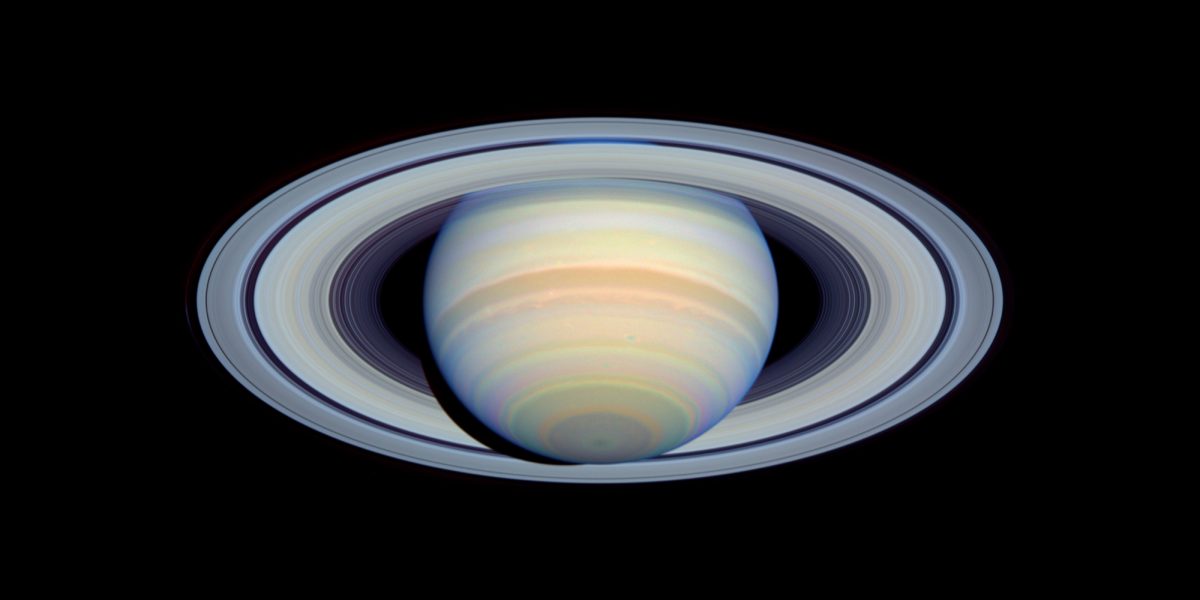
A Feel-Good Summer Hit, Coming to a Sky Near You
Audience-favorite Saturn always wows the crowds, and right now it’s putting on quite the show.

Some things in the night sky are subtle, dim flickers at the edge of our light-gathering abilities. Some are understated, lovely if you’re the kind of person who appreciates the pas de deux of an elegant double star, say, but not likely to win over any of your non-observing friends.
This week, though, I’m turning my sights to a sure-fire crowd pleaser, the celestial equivalent of a summer blockbuster. If I’m really in the mood to startle a person with a sight they think they’re prepared for but probably are not, I show them the planet Saturn, which is available for especially good viewing right now.
Saturn, like its nearest planetary neighbor, Jupiter, is an object that rewards any kind of observation. Glance at it with just your own two eyes. Saturn stands out against surrounding stars, shining more brightly and steadily than nearly all of them, and with a noticeably yellow tint.
To look at Saturn is to glimpse the edge of the naked-eye solar system. At nearly a billion miles out, it’s the most distant thing orbiting the sun that can be reliably spotted without magnification.
With Binoculars
Now turn a pair of binoculars on Saturn. Planets normally resolve themselves into disks with a little ocular help, but Saturn will probably appear noticeably oval. Why? Because with binoculars you get a hint of the planet’s famous rings.
To be sure of what you’re seeing, it helps to keep the binoculars very steady. If there’s any way to mount them to a tripod, do that. If you can’t, try to improvise a solid platform by resting the binoculars on the roof of a car, the top of a fencepost, or something else more steady than your wobbly hands. The reward should be a view of the distinctly oblong silhouette of the planet and its ring system.
(The neighbors will probably think you’re a spy. I count that as a reward, too.)
With a Telescope
And if you should be able to get your hands on a telescope? That’s a sight so cool that it’s worth calling in favors for, or finding a planetarium or astronomy club with public viewing hours. With a telescope four inches in diameter, which is a modest amateur instrument, the rings will appear clearly separate from the planet.
You might even see bands of color on the surface of Saturn itself, and the rings may look distinctly banded, too. The view of Saturn through a telescope never fails to draw gasps from first-timers, and it rewards return visits, too, because the tilt of the rings and the array of visible surface features are a little different every time, drawing even experienced observers back again and again.
How to See It
Right now is a great time to introduce yourself to Saturn. For one thing, the planet’s rings are putting on a good show this year. Because of the way Saturn rotates as it orbits the sun, the rings sometimes appear edge-on to us, and sometimes are tilted to give us a broader view.
The full tilt cycle takes about 15 years. The rings were at their very best in 2017, but are still highly visible and will be for the next couple of years.
This summer and fall are particularly good for viewing the planet. Saturn is now appearing high in the evening sky just after sundown, between the constellations Sagittarius and Capricorn.
An astronomy app (like SkyView, for both iOS and Android) can help you find these two formations. Right now, the best reference point is the planet Jupiter. The Gas Giant is hard to miss; it’s the brightest thing you can see in the southwestern sky. Once you’ve located Jupiter, hold your fist up at arm’s length. Saturn is about one hand-width to the left of Jupiter.
See it? Okay, now go make some popcorn and settle in. This show’s on a limited engagement—by winter Saturn will be too low in the sky at nightfall to observe. Catch it while you can.
